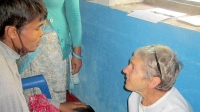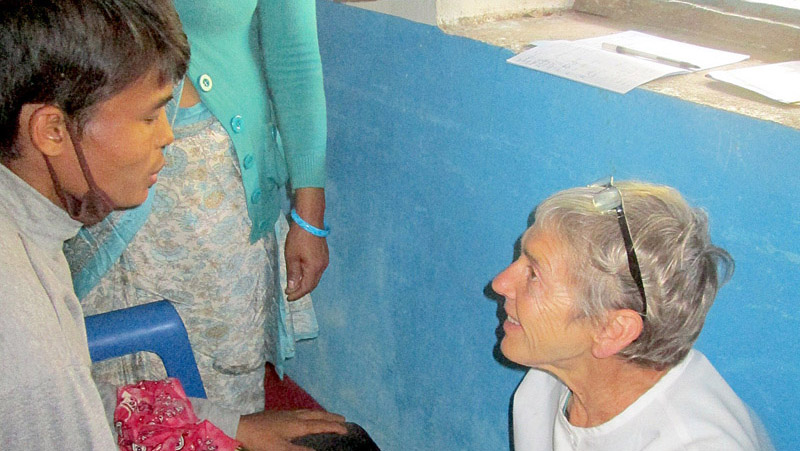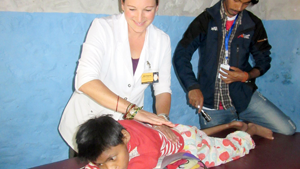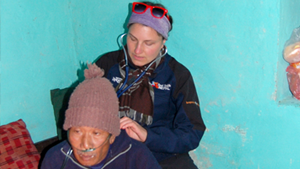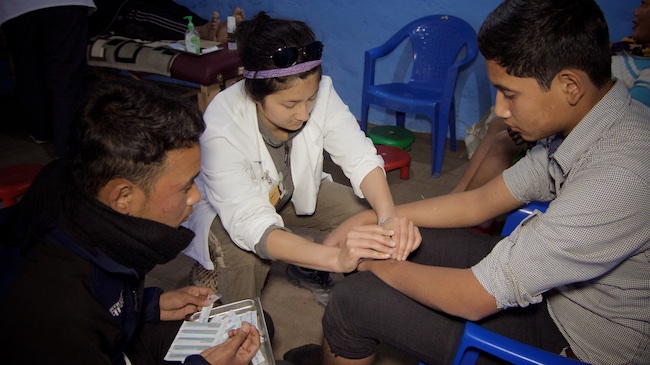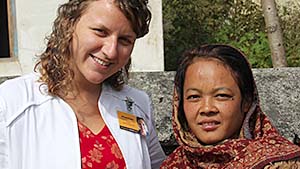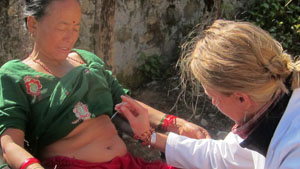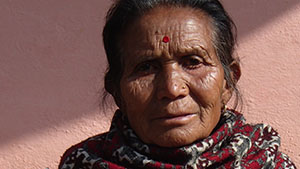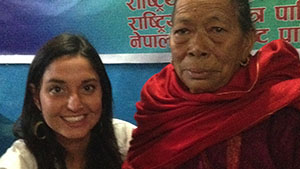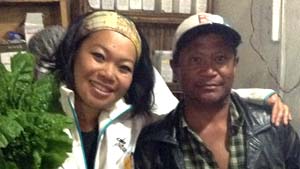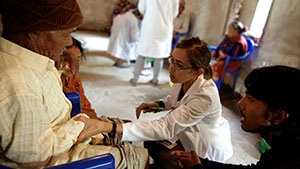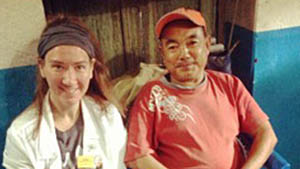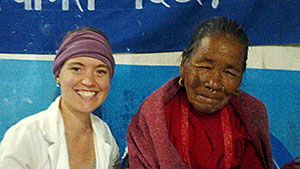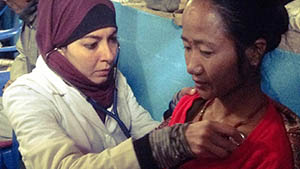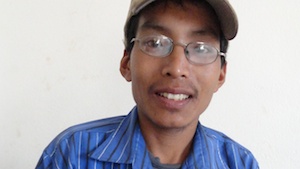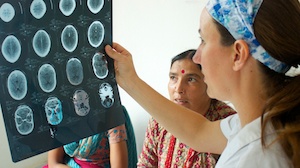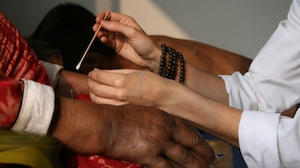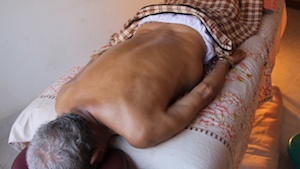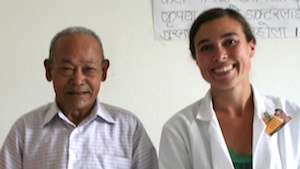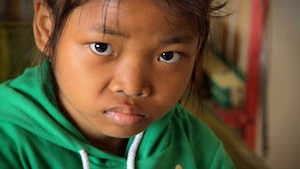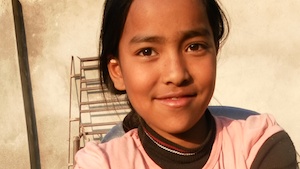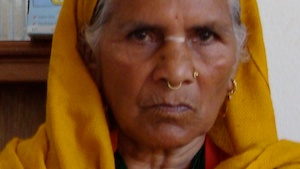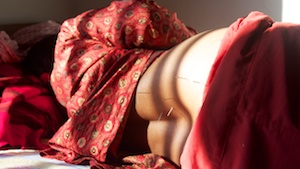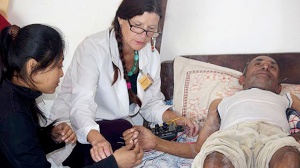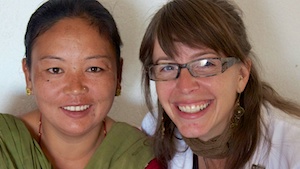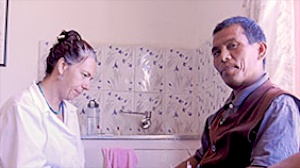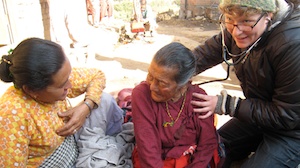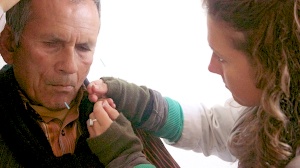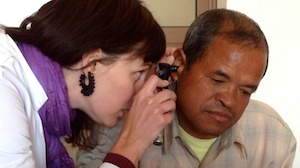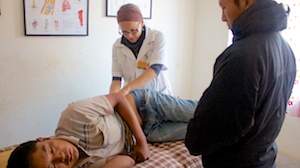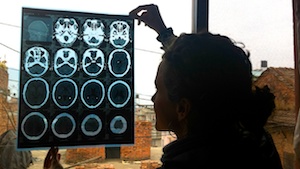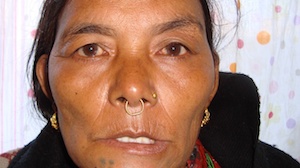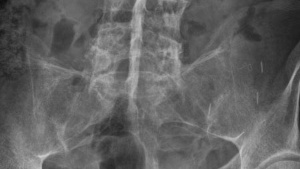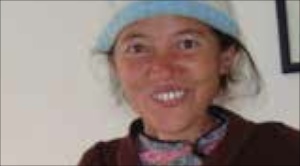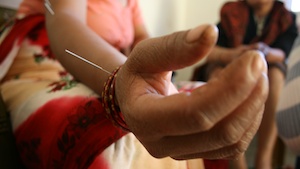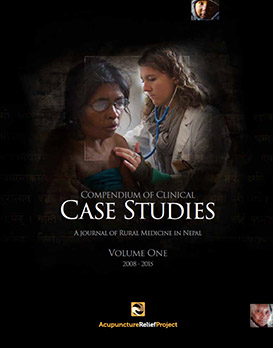Elissa Chapman BAppSc (TCM)
February 2012
Overview
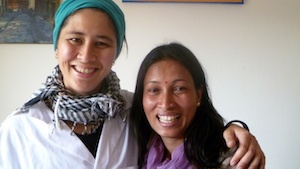 35-year-old female presents with multiple bilateral joint pain beginning 18 months previously and had received a diagnosis of rheumatoid arthritis at the Arthritis & Rheumatic Diseases Treatment Centre in Nepal. After 10 treatments of acupuncture, in conjunction with herbal medicine, she experienced a significant reduction in joint pain and inflammation.
35-year-old female presents with multiple bilateral joint pain beginning 18 months previously and had received a diagnosis of rheumatoid arthritis at the Arthritis & Rheumatic Diseases Treatment Centre in Nepal. After 10 treatments of acupuncture, in conjunction with herbal medicine, she experienced a significant reduction in joint pain and inflammation.
SUBJECTIVE
Patient is a 35-year-old woman presenting with bilateral multiple joint pain which began approximately 18 months ago. She describes bilateral knee and shoulder pain, pain in her wrists, hands and ankles. Her symptoms originally began with pain in the right shoulder, which after 1 to 2 months was followed by pain in her left shoulder. Within 2 to 3 months, the pain spread to her wrists, then hands. The most recent development has been the pain in her knees and ankles, which began approximately 6 months prior to her first consultation at this clinic. She reports that the severity of the pain in each affected joint is intermittent and unpredictable, and has a tendency to move around. She describes the pain as aching and stiffness, which is worse at night, and for which she takes non-steroidal anti-inflammatory medication (aceclofonac 200mg). This allows her to sleep an average of 6 to 7 hours straight per night, whereas without it she only manages to achieve 5 to 6 hours per night of broken sleep.
Prior to the onset of joint pain, the patient reports she had intermittent cold and flu symptoms over a period of 12 months, including nasal congestion, sore throat and generalized body aches. She did not consult any health practitioners regarding these symptoms.
She was prescribed medication approximately 12 months ago, which she had been taking up until 2 months prior to this consultation. She reports that the medication has provided no relief, therefore she has ceased taking it. Her symptoms have not noticeably worsened since ceasing the medication. She has been having Ayurveda oil massage and steam baths every other day for the past 12 days. This has not provided any relief.
The patient reports that the most severe pain is in her right hand, in particular the fifth metacarpal joint, and in her left shoulder.
Bowel movements are 1 to 2 times daily and fully formed, and urination is 3 to 4 times daily and is pale to medium yellow in colour. Menstruation is regular with mild pain with medium to heavy bleeding for 2 days and light flow for 3 days. Her sleep is disturbed by pain, for which she takes anti-inflammatory medication, daily, to manage.
Stiffness and pain is worse in the morning and for the first 1 to 2 hours upon waking, is less in the afternoon and then worse again late at night.
Objective
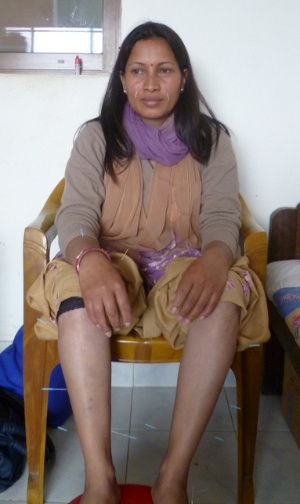 Patient’s overall health appears to be above average for age and environment. Her demeanour is generally relaxed and cheerful, but with a tendency to carry herself with a slight unease. She occasionally winces due to pain. There is distinct rebound tenderness when palpating the joints of the right hand compared to the left, especially the metacarpal joints. There is also strong palpable tenderness when applying mild to medium pressure to the medial and superior borders of the scapula on both shoulders, and when applying medium pressure to the posterior and anterior borders of the glenorohumeral joint of the left shoulder. There is distinct tenderness when applying moderate pressure to the lower borders of the patella and medial epicondyle of the tibia on both knees. Ankles do not produce distinct tenderness when palpated.
Patient’s overall health appears to be above average for age and environment. Her demeanour is generally relaxed and cheerful, but with a tendency to carry herself with a slight unease. She occasionally winces due to pain. There is distinct rebound tenderness when palpating the joints of the right hand compared to the left, especially the metacarpal joints. There is also strong palpable tenderness when applying mild to medium pressure to the medial and superior borders of the scapula on both shoulders, and when applying medium pressure to the posterior and anterior borders of the glenorohumeral joint of the left shoulder. There is distinct tenderness when applying moderate pressure to the lower borders of the patella and medial epicondyle of the tibia on both knees. Ankles do not produce distinct tenderness when palpated.
The knees, ankles and fingers can be passively and actively moved through all range-of-movement without restriction, with the exception of the left shoulder, which triggers pain on passive and active lateral abduction above 90 degrees. There is no apparent swelling of the joints in the knees, shoulders and wrists and none appear misshapen.
There is mild palpable swelling in the fifth metacarpal joint of the right hand. The joints of the hands and knees feel slightly warmer to touch than others.
Tongue is light red with normal body, thick yellow root and red tip. Pulse is rapid and slightly slippery.
Assessment
DX: Initial blood analysis taken at the Arthritis & Rheumatic Diseases Treatment Centre in Lalitpur, 12 months ago, shows elevated serum rheumatoid factor and raised white blood cell count. This result, combined with symptoms of multiple bilateral joint tenderness, mild joint swelling (in greater than 3 joints including in the hands and wrists), and morning stiffness for greater than 1 hour, resulted in the patient meeting the criteria for a diagnosis of rheumatoid arthritis which was given at the above clinic where her initial assessment was carried out.
TCM DX: Wind-damp bi syndrome due to damp-heat, and wind-heat toxin due to latent heat invading the joints causing qi and blood stagnation and damp retention. Over time, if left unabated, this typically would lead to swelling and deformity due to phlegm stagnation and blood stasis.
PROGNOSIS: Besides mildly visible signs of synovial thickening in several small joints, the patient is otherwise free from any severe pathological tissue changes. Therefore, successful management of systemic joint inflammation may help to preserve the mobility and dexterity of the joints. Depending on the outcome of acupuncture and herbal treatment, this may include conventional drug therapy.
PLAN
Treatment principles: Dispel wind, resolve damp and clear toxic heat. Open channels and collaterals. Invigorate qi and blood.
Treat with acupuncture 2 to 3 times weekly for 10 treatments before reassessing. Treatment approach is to use Shaoyang channels to dispel wind and damp and Yangming channels to purge heat toxin and move qi and blood. Points are also used to nourish blood and qi to anchor wind and prevent pathogenic factors from attacking the channels.
Typical treatment: TB5 and GB41, needled contra laterally, with Shaoyang points such as TB2, GB39, GB35, GB36 and GB34 to dispel wind-damp from the channels. LI11 and ST3 are used to expel heat. SP6 is used along with LI4 and LIV3 to anchor wind and circulate blood and qi throughout the body.
At the third consultation, Shu Jin Huo Xue Tang was given as a powder with a dosage of 4g twice per day to dispel wind and damp, invigorate blood and remove blood stasis. The prescription is to be followed for 10 days and then reassessed.
OUTCOME
As early as the third consultation, she found it easier to walk for longer periods, as she had less pain in both knees and no pain in her ankles. She could take a shower without pain, whereas before, this used to cause pain in her shoulders and hands. The palpable pain in the first and second metacarpal joints of both feet increased significantly since the fourth treatment, with distinct visible and palpable swelling. Initially, she had reported mild pain in these joints and no noticeable swelling.
After 10 acupuncture treatments over 5 weeks, the patient reported having not taken painkillers for 2 weeks and was sleeping 6-7 hours per night without them. She reported only mild pain in her left shoulder (the initial site of most pain) with some mild to moderate tenderness upon palpation around the medial and posterior borders of the scapula. She could laterally abduct her left shoulder to 120 degrees and passive abduction was to 160 degrees without pain. Palpation of the medial epicondyle of the tibia of both legs produced mild to moderate pain.
From treatment to treatment, the patient reported fluctuating levels of pain and inflammation in her left elbow and both hands. In particular, the pain in her left hand would move from joint to joint, sometimes over a period of 24-48 hours.
After the fourth acupuncture treatment, the patient had been recommended by a friend, to consult a Tibetan medicine doctor specializing in the treatment of arthritis. It was agreed that she would cease the Chinese herbal medicine and proceed with the Tibetan herbal medicine prescribed to her alongside acupuncture. Tibetan herbal medicine would be more consistently available to the patient over a longer period.
Conclusion
This patient experienced a significant reduction in pain and inflammation within 10 treatments. She is advised to continue treatment 1 to 2 times weekly for another 4 to 6 weeks with the hope of continuing to improve her symptoms. Whether or not acupuncture treatment and herbal medicine alone, without conventional drug treatment, will result in a full remission from symptoms, is unknown. However, it appears that acupuncture may be a useful therapy for managing pain, inflammation and preserving joint mobility and delaying long-term site and enzymatic damage, which usually results from persistent and chronic inflammation and swelling of the synovium in the joints. It is also possible that her progress over the last 6 treatments was aided by the prescription of Tibetan herbal medicine. However, as she experienced significant relief after the initial 4 acupuncture treatments, it is presumed that acupuncture has and may continue to play a significant role in managing her symptoms.


